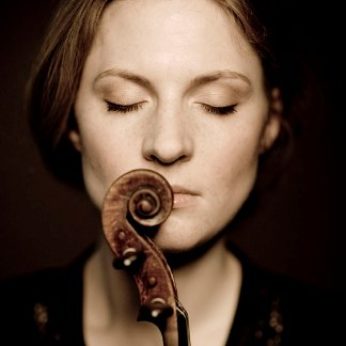Composer: Nicolò Paganini (b. 1782 - d. 1840)
Performance date: 30/06/2012
Venue: St. Brendan’s Church
Composition Year: 1819
Duration: 00:41:47
Recording Engineer: Anton Timoney, RTÉ lyric fm
Instrumentation: vn
Instrumentation Category:Solo
Artists:
Tanja Becker-Bender -
[violin]

Paganini’s first published works, and the ones with
which he has been most intimately associated, were written between 1802 and
1817 during his first Italian tours. Perhaps mockingly dedicated to ‘The
Artists’, the Caprices were one of only five works Paganini allowed to be
published during his lifetime, the rest remaining his carefully guarded trade
secrets. The Caprices have a deeply pedagogical character, each illustrating a
particular aspect of violin technique pushed to its physical extremities. They
are a portrait of a wild frontier of playing, where passages of audacious
complexity and dazzling effect were nonchalantly paraded. It would be easy to
dismiss the Caprices as a vehicle for the unadulterated display of virtuosity,
but in the right hands they can truly come alive and the atmosphere of theatre
and opera drips from every melody.
Although unique in their display of new
instrumental techniques the works had a clear ancestry in the 24 Caprices
contained within the concertos of Locatelli’s L’arte
del Violino [1722]. As he struggled to better his
playing and technique as a teenager in late 18th century Genoa, systematically
exhausting the expertise of all the local teachers around him, Paganini
obtained a copy of L’arte del
Violino and worked at
mastering it to stretch his ability. Grappling with Locatelli’s work no doubt
had a considerable influence on the young Paganini, stimulating his lifelong
emphasis on transcending the apparent limitations of his instrument in
sensational and exciting ways.
Within the Caprices there are plenty of
miraculous moments. The seemingly independent bass line that emerges from the
breakneck spiccato passages of the 5th, the
tremblingly ghostly chorus effects of the double-stopped trills employed in the
6th, the much imitated 24th Caprice where a simple melody is
subjected to a bewildering array of technical invention. In the Caprices the
tone of Paganini’s life and music is set; the helter-skelter pace, the manic
chromaticisms, the schizophrenic juxtaposition of the instrument’s extremities.
Overall they are works that confound and dazzle, exaggerating with every
stroke.
Wherever Paganini went hyperbole followed.
Franz Liszt noted that The
excitement he created was so unusual, the magic that he practised upon the
imagination of his hearers so powerful, that they would not be satisfied with a
natural explanation. Old tales of witches and ghost stories came into their
minds; they attempted to explain the miracle of his playing by delving into his
past, to interpret the wonder of his genius in a supernatural way; they even
hinted that he had devoted his spirit to the Evil One, and that the fourth
string of his violin was made from his wife’s intestines, which he himself had
cut out.
Even Goethe himself didn’t quite know what
to make of these sensational pyrotechnics; Now
I too have heard Paganini play. In relation to this pillar of flame and cloud I
had no base for what is known as enjoyment, which as far as I am concerned
always hangs somewhere between the feelings and the intellectual. All I heard
was something akin to a meteor, and then was unable to account for it.
Controversy and debate, indignation and idolisation abounded
everywhere Paganini ventured onto a stage, yet if one thing could be agreed on,
it was that he had a formidable presence, whether as theatrical trickster or
ground breaking virtuoso. It was during the tours in which the Caprices were
forged that he began to cultivate his legendary stage persona; the long wild
hair and shabby black suit, the staged breaking of strings, the impromptu
musical jokes, the tendency to spontaneously ‘improve’ the works of other
composers, emerging late for added tension from behind the curtains as they
were slowly lifted to the sound of an extended drum roll. His sense of the
theatrical was paramount to his success, the rumours and gossip that spread of
his diabolical talent and countenance proving to be a most effective
promotional apparatus. When he finally made his Vienna début in 1828 women wore
their hair a la Paganini, bakers made their bread in the
shape of violins, and he made more money from eight concerts than Schubert
earned from his entire life’s work.
Copyright © 2025 West Cork Music. All rights reserved.
Designed and developed by Matrix Internet